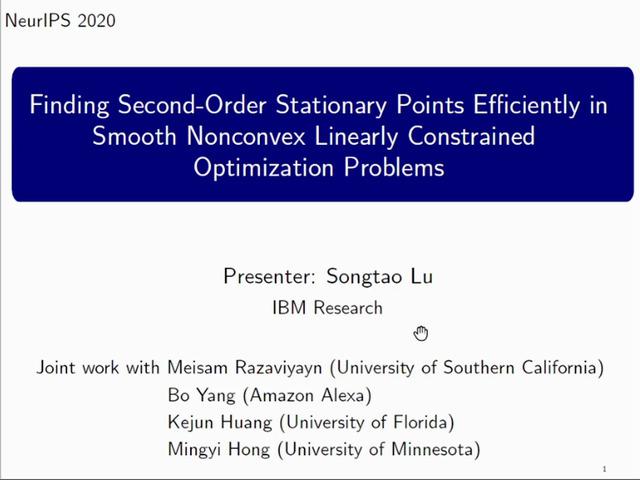Abstract:
The goal of Sparse Convex Optimization is to optimize a convex function $f$ under a sparsity constraint $s\leq s^*\gamma$, where $s^*$ is the target number of non-zero entries in a feasible solution (sparsity) and $\gamma\geq 1$ is an approximation factor. There has been a lot of work to analyze the sparsity guarantees of various algorithms (LASSO, Orthogonal Matching Pursuit (OMP), Iterative Hard Thresholding (IHT)) in terms of the Restricted Condition Number $\kappa$. The best known algorithms guarantee to find an approximate solution of value $f(x^*)+\epsilon$ with the sparsity bound of $\gamma = O\left(\kappa\min\left\{\log \frac{f(x^0)-f(x^*)}{\epsilon}, \kappa\right\}\right)$, where $x^*$ is the target solution. We present a new Adaptively Regularized Hard Thresholding (ARHT) algorithm that makes significant progress on this problem by bringing the bound down to $\gamma=O(\kappa)$, which has been shown to be tight for a general class of algorithms including LASSO, OMP, and IHT. This is achieved without significant sacrifice in the runtime efficiency compared to the fastest known algorithms. We also provide a new analysis of OMP with Replacement (OMPR) for general $f$, under the condition $s > s^* \frac{\kappa^2}{4}$, which yields Compressed Sensing bounds under the Restricted Isometry Property (RIP). When compared to other Compressed Sensing approaches, it has the advantage of providing a strong tradeoff between the RIP condition and the solution sparsity, while working for any general function $f$ that meets the RIP condition.









































